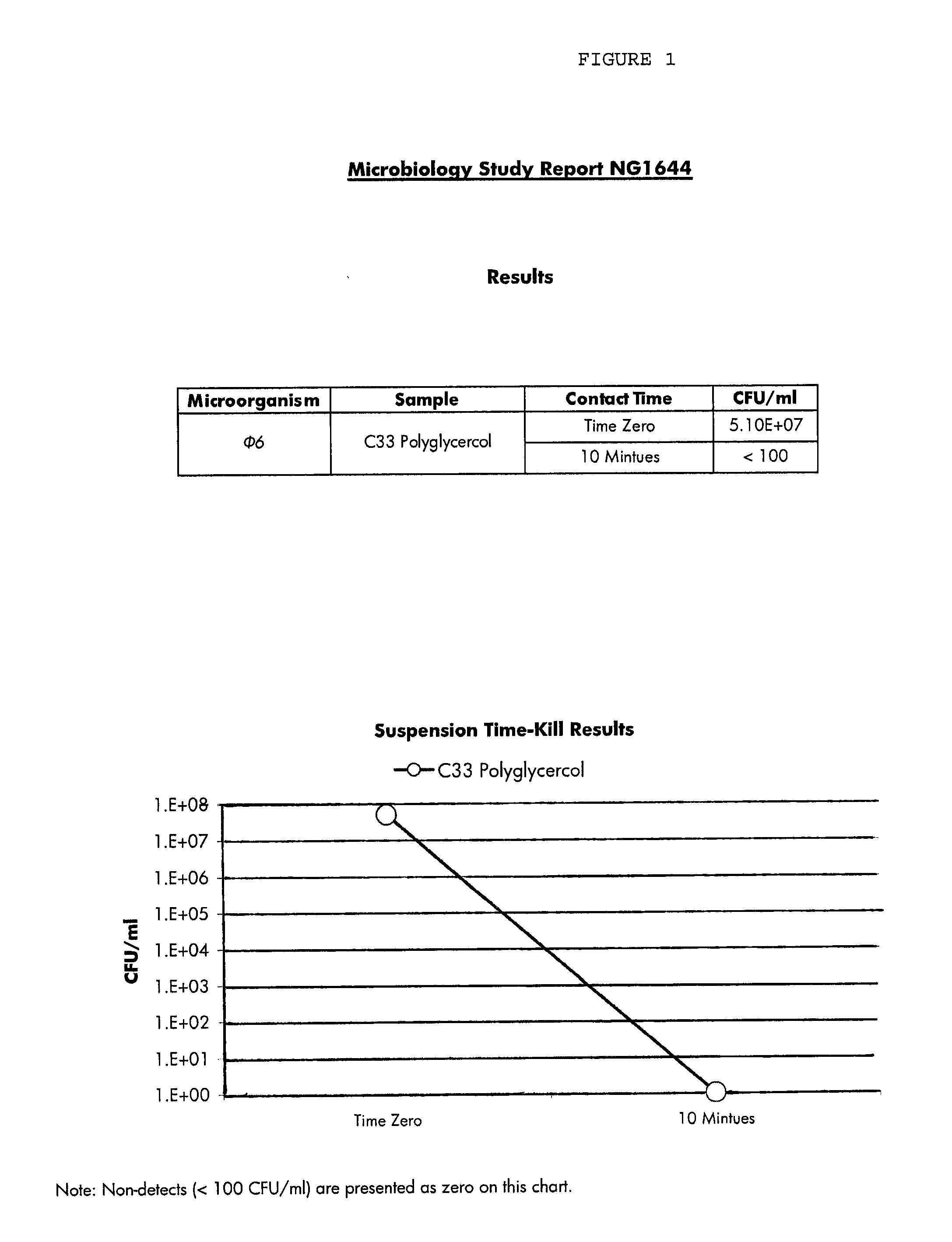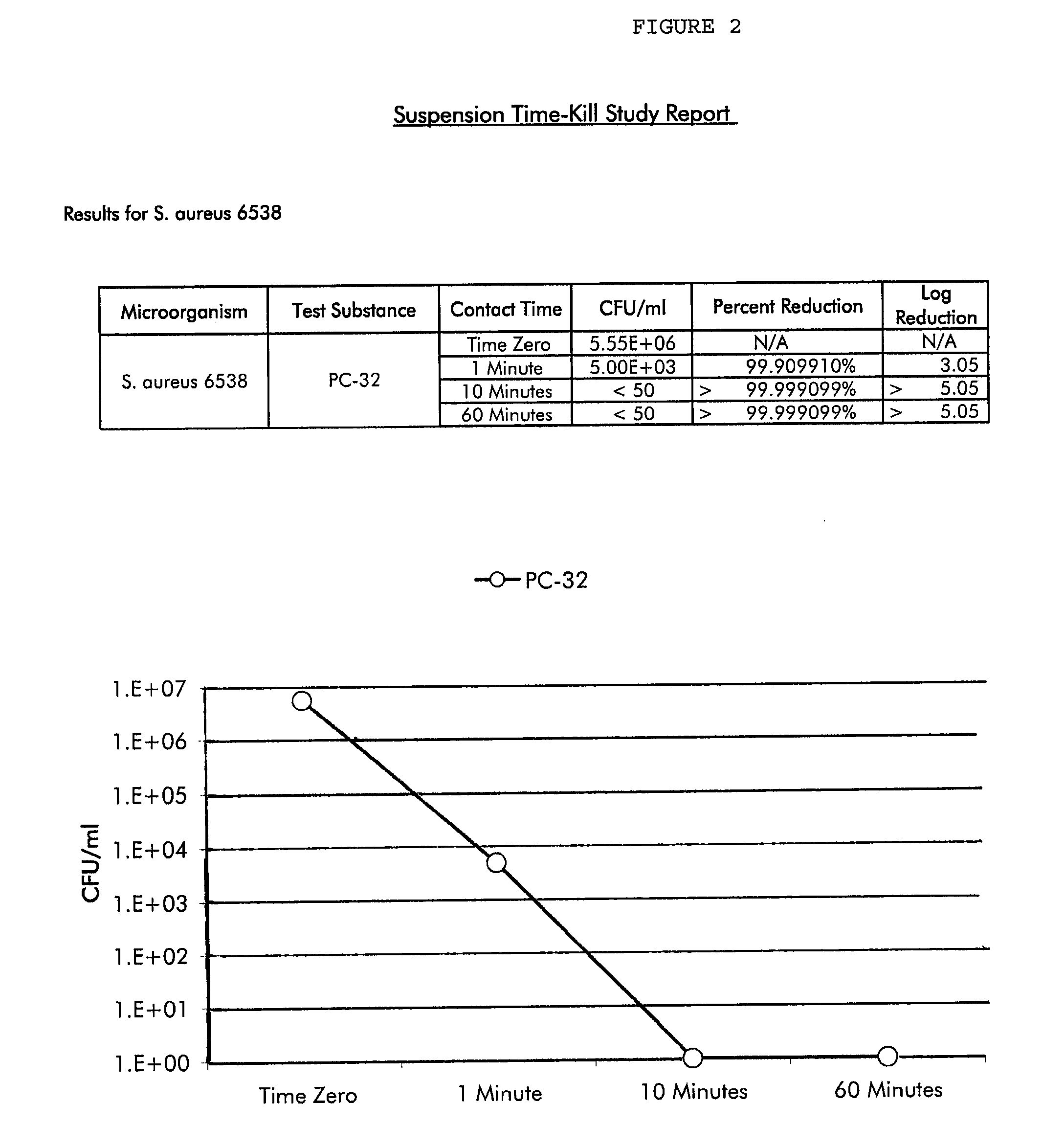Methods and compositions for novel liquid crystal delivery systems
a delivery system and liquid crystal technology, applied in the field of liquid crystal mixture preparation, can solve the problems of low solubility, difficulty in preserving the active functions of ingredients in complex systems, and loss of ingredients' benefits, so as to reduce the incidence of problematic crystallization, improve the effect of solubility and quick kill of microorganisms
- Summary
- Abstract
- Description
- Claims
- Application Information
AI Technical Summary
Benefits of technology
Problems solved by technology
Method used
Image
Examples
example 1
[0042]The methods of the present invention were used to prepare a liquid crystal mixture of three fatty acid esters with two polyhydric alcohols by partial hydrolyzation that was stable and antimicrobially active.
[0043]Propylene glycol and polyglycerol are combined at a ratio of 1:1. An aliquot of 40 grams of this polyhydric alcohol mixture is measured into a glass container. To this, 60 grams of a blend of glycerol monocaprate, glycerol monocaprylate, and glycerol monolaurate (5:5:40 respectively) is added directly to the polyhydric alcohol mixture. The entire mixture is heated to 110° C. To this heated mixture, approximately 4% by weight of a 45% aqueous solution of potassium hydroxide is added. The mixture is stirred and allowed to cool. The resultant mixture is clear and has low viscosity with a pH of approximately 9.2-9.5.
[0044]Example 1 shows high solubility in water, up to 80%, without the need for emulsification. Light polarized microscopy and laser diffraction confirmed the...
example 2
[0045]The methods of the present invention were employed to prepare a liquid crystal mixture of one fatty acid ester and two polyhydric alcohols by partial hydrolyzation to that was stable and antimicrobially active.
[0046]Propylene glycol and polyglycerol are combined at a ratio of 1:1. An aliquot of 40 grams of this polyhydric alcohol mixture is measured into a glass container. To this, 60 grams of glycerol monolaurate is added directly to the polyhydric alcohol mixture. The entire mixture is heated to 110° C. To this heated mixture, approximately 4% by weight of a 45% potassium hydroxide aqueous solution is added. The mixture is stirred and allowed to cool. The resultant mixture is clear and has low viscosity with a pH of approximately 9.2-9.5.
[0047]The resultant product of Example 2 is soluble in aqueous solutions and light polarized microscopy and laser diffraction confirmed the presence of liquid crystals in the samples.
example 3
[0048]The methods of the present invention were used to prepare a concentrated glycerol monolaurate and a polyhydric alcohol liquid crystal mixture by partial hydrolyzation to creation a stable antimicrobial composition.
[0049]An aliquot of 40 grams of polyglycerol is mixed with 60 grams of glycerol monolaurate. This mixture is heated to 125° C. Potassium hydroxide (45% in an aqueous solution) is added to the mixture at 1.2 grams KOH (aq) per 20 grams of glycerol monolaurate. This mixture is then stirred with medium sheer for five minutes. As with all the samples, the mixture initially clouds, then clears upon mixing.
[0050]Testing of the mixture liquid chromatography / mass spectrometry confirmed a conversion of approximately 4.2% of the glycerol monolaurate to it potassium salt, potassium laurate. Resultant pH was recorded at 9.4. The mixture cooled to a white, opaque paste however no separation was observed. Warming the mixture to temperatures above 60° C. resulted in a clear solutio...
PUM
| Property | Measurement | Unit |
|---|---|---|
| Temperature | aaaaa | aaaaa |
| Temperature | aaaaa | aaaaa |
| Temperature | aaaaa | aaaaa |
Abstract
Description
Claims
Application Information
 Login to View More
Login to View More - R&D
- Intellectual Property
- Life Sciences
- Materials
- Tech Scout
- Unparalleled Data Quality
- Higher Quality Content
- 60% Fewer Hallucinations
Browse by: Latest US Patents, China's latest patents, Technical Efficacy Thesaurus, Application Domain, Technology Topic, Popular Technical Reports.
© 2025 PatSnap. All rights reserved.Legal|Privacy policy|Modern Slavery Act Transparency Statement|Sitemap|About US| Contact US: help@patsnap.com



